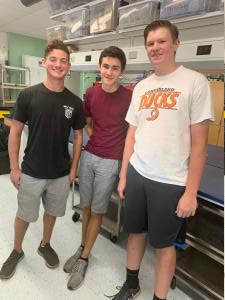

- Program:
- Barcode Long Island
- Year:
- 2019-20
- Research Topic:
- Biodiversity & trade
- Taxonomic Group Studied:
- Animals: Invertebrate
Project:
The Effect of Pyrethrins on Diversity of Mosquito Populations
- Students:
- Max Esposito, Tim Hantzschel, Paul Pillitteri
- School:
- West Islip High School, Suffolk
- Mentors:
- Mary Kroll
Abstract:
Aedes, Culex, and Anopheles genera of mosquitoes have the potential to carry harmful and deadly diseases (Juliano & Lounibos, 2005). We aim to see how the diversity of mosquitoes is affected by pyrethrins which are neurotoxic insecticides derived from the Chrysanthemum plant (Davies et al., 2007). In order to find which species of mosquito are being affected, we must barcode the collected samples as it is difficult to identify a mosquito to the species level by sight alone (Engahl et al., 2014). It is hypothesized that there will be less amounts and less biodiversity of mosquitoes in a yard that is regularly treated with pyrethrins because pyrethrins target the nervous system of insects and paralyze them. This causes the mosquitoes to not be able to collect food and they die. We are going to use two BG Sentinel 2 mosquito traps with dry ice as a lure. One trap will be placed in an untreated yard while the other will be placed in a yard that is regularly treated with pyrethroids.

